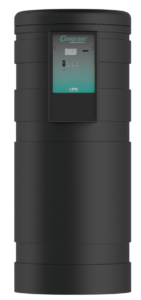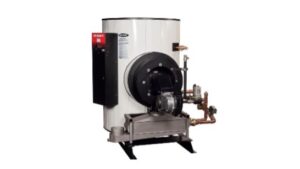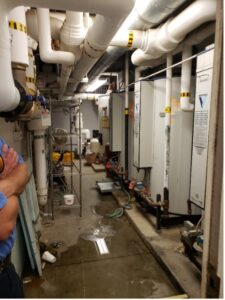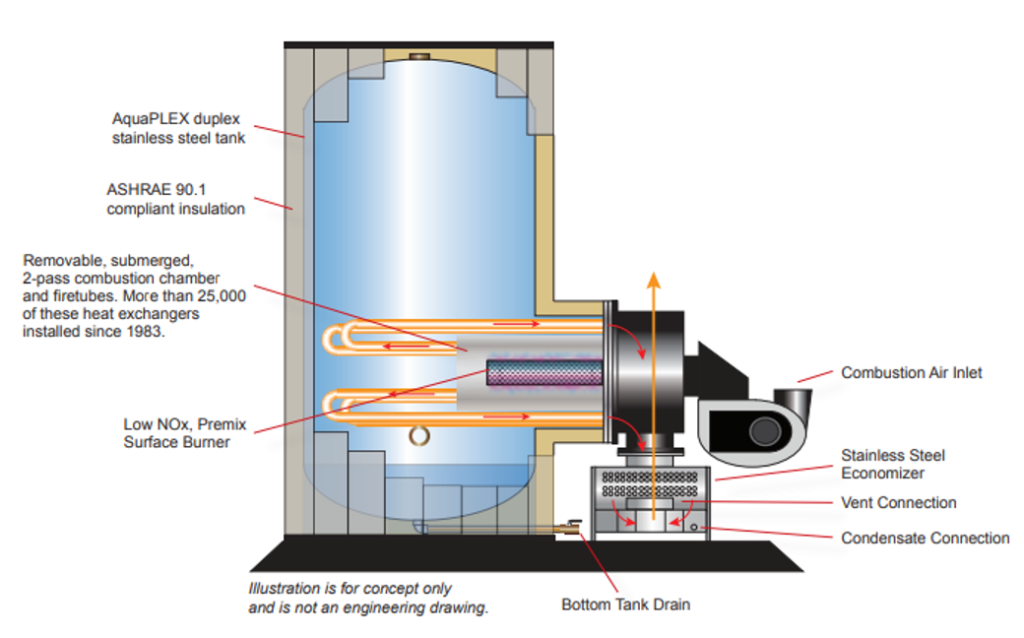When determining the size and number of water heaters to meet the customer’s needs, there are many factors to consider. How many water heaters do you need to meet the design conditions? Do you want some redundancy in case one unit goes down at a critical time? What happens if there is an expected facility expansion that will increase the demand in the future? This week we discuss weighing redundancy, future expected needs, and current requirements of your domestic water heaters.
The Number of Tank Heaters Required
When using an indirect steam or water source heater, the unit is normally sized to handle the complete load. We often see multiple gas fired tank heaters on projects. I visited an independent and assisted living project a month ago and it had a quantity of eight parallel 100-gallon, 199,000 BTUH, water heaters of a competitor’s brand installed. The complex venting alone was a sight to see. It made me think about what a better solution would provide.
 I was not sure what this large project’s actual load might be, but I wondered about the alternative. If the issue was the load, we could have done it with two PVI Conquest 130 water heaters with 100 gallons each and a load of up to 1,000,000 BTUH. That water heater selection is more than 4,000 BTUH per gallon and meets the qualification as a tankless water heater definition. Visit our blog, Commercial Gas Fired Water Heater Types, for more information.
I was not sure what this large project’s actual load might be, but I wondered about the alternative. If the issue was the load, we could have done it with two PVI Conquest 130 water heaters with 100 gallons each and a load of up to 1,000,000 BTUH. That water heater selection is more than 4,000 BTUH per gallon and meets the qualification as a tankless water heater definition. Visit our blog, Commercial Gas Fired Water Heater Types, for more information.
 If storage was the issue, we would have turned to the PVI Turbopower 96. This 97.5% efficient gas fired tank heater would have offered storage capacity from 300-1,500 gallons and loads from 500 to 1,600 MBH. The venting and first cost would be less than a large number of smaller units.
If storage was the issue, we would have turned to the PVI Turbopower 96. This 97.5% efficient gas fired tank heater would have offered storage capacity from 300-1,500 gallons and loads from 500 to 1,600 MBH. The venting and first cost would be less than a large number of smaller units.
Designing for Both Now and the Future – the Challenges
If you look around a typical mechanical room, there is not a lot of extra space. This is particularly true for any additional equipment if the original equipment is initially undersized or if there is an increase in demand. One example of this might be an addition to a building. How does this affect how you will look at the sizing of the equipment?
The challenges of future capacity requirements can be an interesting engineering issue. Too much BTUH installed now, and the efficiency drops. Too much storage now, and we may have stagnant water in tanks. If we plan to add water heaters later, will there be clearances to get them in the building? Will there be room for venting and more roof penetrations? Will the water heater controls software support the addition of more units in the future?
If you use fixture count to size your water heater demand, then there will already inherently be some margin in the design. That margin will be different for whichever manufacturer software (or ASPE or chapter 51 of ASHRAE) you used to size the heaters. A lot of customers require the initial sizing to be n+1, such that ‘n’ units can handle the expected flow requirements with a ‘+1’ for redundancy. Doing this allows for some buffer between actual operation and available capacity.
Designing for Both Now and the Future – the Solution
One interesting option in considering current versus future needs is the option that the PVI Turbopower 96 offers. With this gas (or oil or propane) fired, condensing tank-type water heater, the burner and heat exchanger are replaceable while keeping the rest of the unit intact. The heat input ranges from 500 MBH all the way up to 1,600 MBH. There could be a lot of room for increasing the energy input based on initial sizing. This saves a significant amount of labor to upgrade the current system because all the existing piping connects remain. Another feature is that the vents and storage tanks are not changed either. The only thing that needs be changed is the burner and heat exchanger.
No concerns about adding tanks. No concerns about fitting them in the building. No concerns about venting changes. No concerns about control software. Besides concerns you may be eliminating, there are huge advantages for the building owner.
PVI Turbopower 96 Offers Even More
This gas fired tank type water heater has a duplex stainless-steel tank with a 25-year warranty. The heat exchanger has a 10-year warranty. If the future capacity increases in 5,6, or 8 years, your client has complete protection and you, the engineer or contractor will limit your concerns. This looks like a great solution to keep in the toolbox for future expansion.



